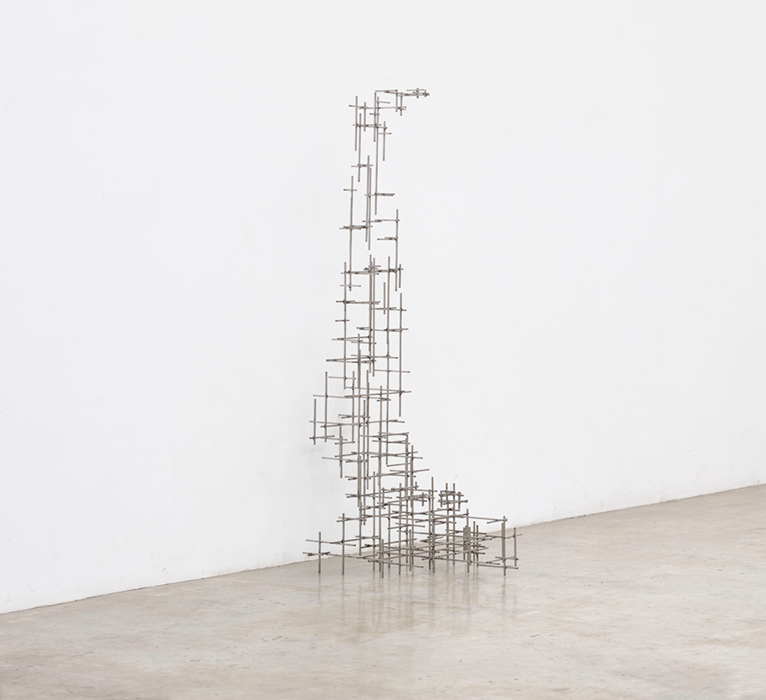I am interested in the body, because it is the place where emotions are most directly registered. When you feel frightened, when you feel excited, happy, depressed somehow the body registers it. – Antony Gormley
For over three decades, British artist Antony Gormley has created sculptural objects, installations, and public works that explore the expressive potential of the human body. Gormley’s unique ability to portray the human body as a site of feeling, thought, energy, and space makes his works especially resonant with viewers. Steep II — from Gormley’s Scaffold series (2014–2018) — uses segments of welded stainless steel bar to depict a person with its legs braced against a wall. The posture has been featured in other Gormley works, and he has used it in other orientations (ie: on the ceiling, wall, or standing), and its associations shift dramatically in each instance. Psychologically, the form is reminiscent of a yoga pose, a body in complete mental and physical unity, dissolving in a moment of pure focus. As in many of Gormley’s works, negative space plays a crucial role, hinting at the energies and forces at work on, and inside, the human body. With a minimal amount of material, Steep II conveys the structural stacking of the body on itself as a physical form that is constantly resisting and adjusting to gravity through its interdependent parts.
Gormley has participated in major group exhibitions including the International Sculpture Biennale of Carrara (2008 and 2010), the Sydney Biennale (2006); Documenta VIII, Kassel, Germany (1987); and the Venice Biennale (1982 and 1986). Solo exhibitions include Kunsthaus Bregenz, Bregenz (2010); Artium, Valencia (2009); Kunsthall Rotterdam, Musée d’Art Moderne De Saint-Etienne Metropole, and MARCO, Monterrey (2008); Hayward Gallery, London (2007); MADRE, Naples (2006); Fundacao Calouste Gulbenkian, Lisbon (2004); Baltic Centre for Contemporary Art, Gateshead, England (2003); and the National History Museum, Beijing, China (2003). He was awarded the Turner Prize in 1994 and was made an Order of the British Empire (OBE) in 1997. He is an Honorary Fellow of the Royal Institute of British Architects, and has been a Royal Academician since 2003.
